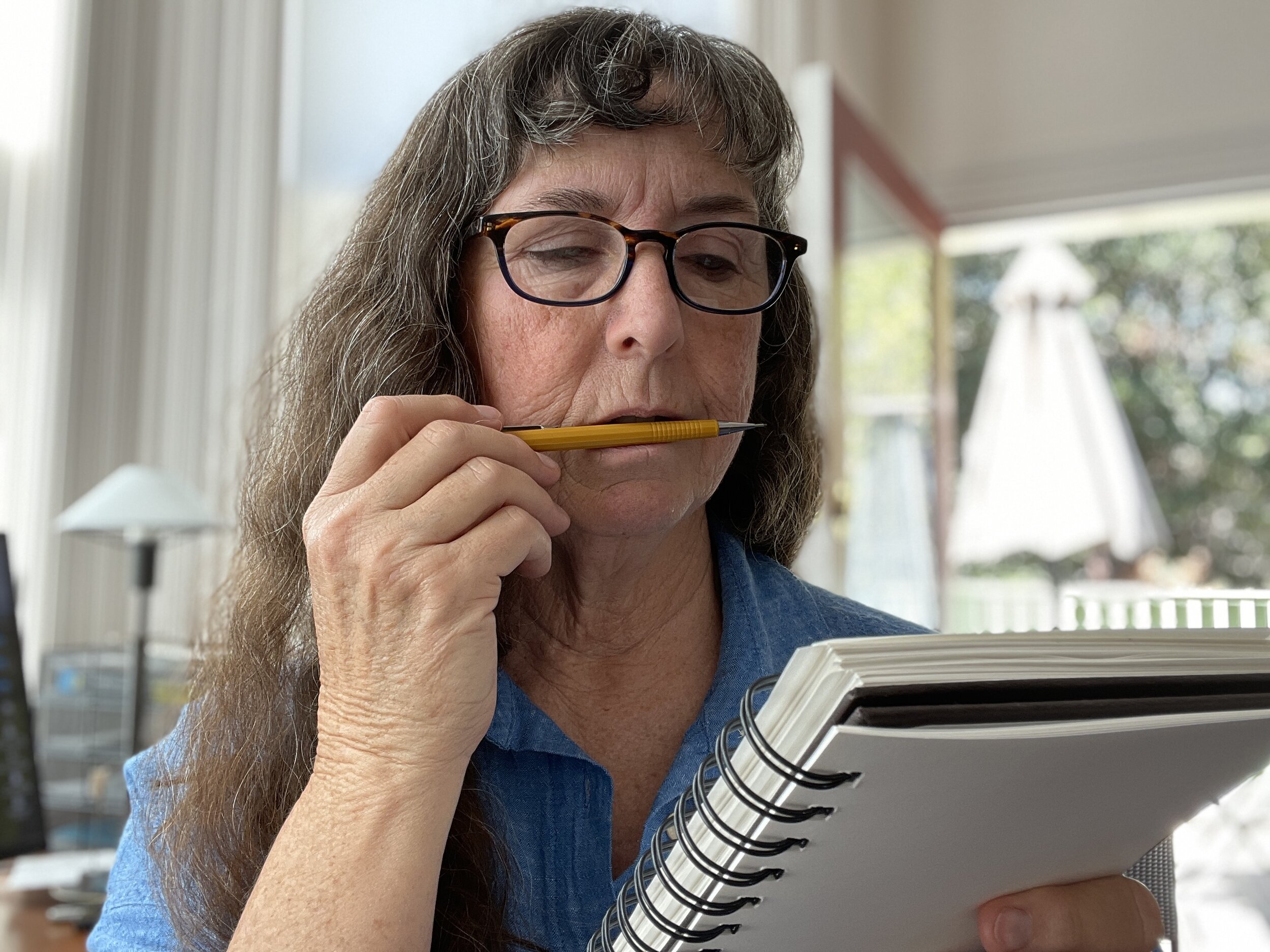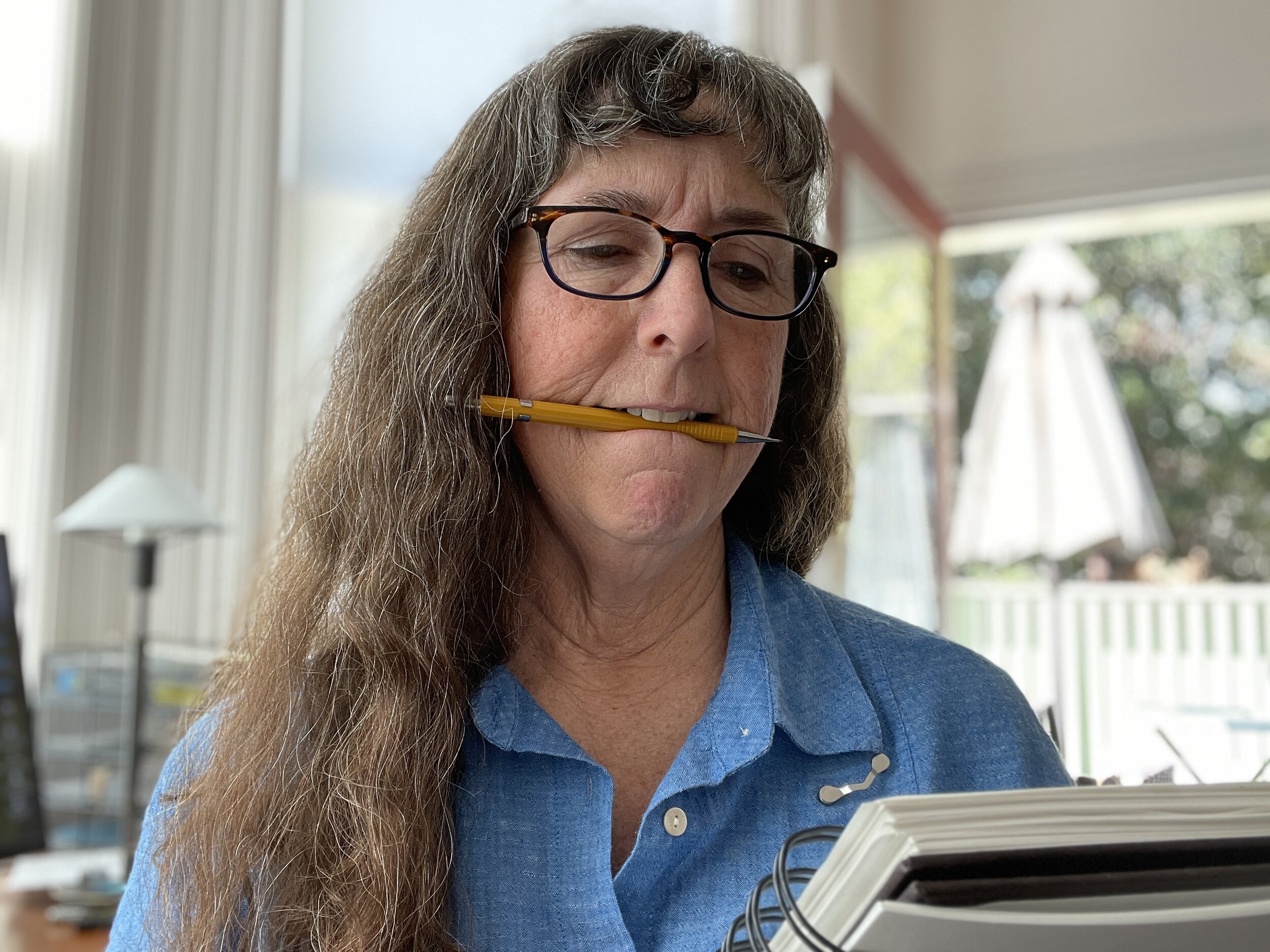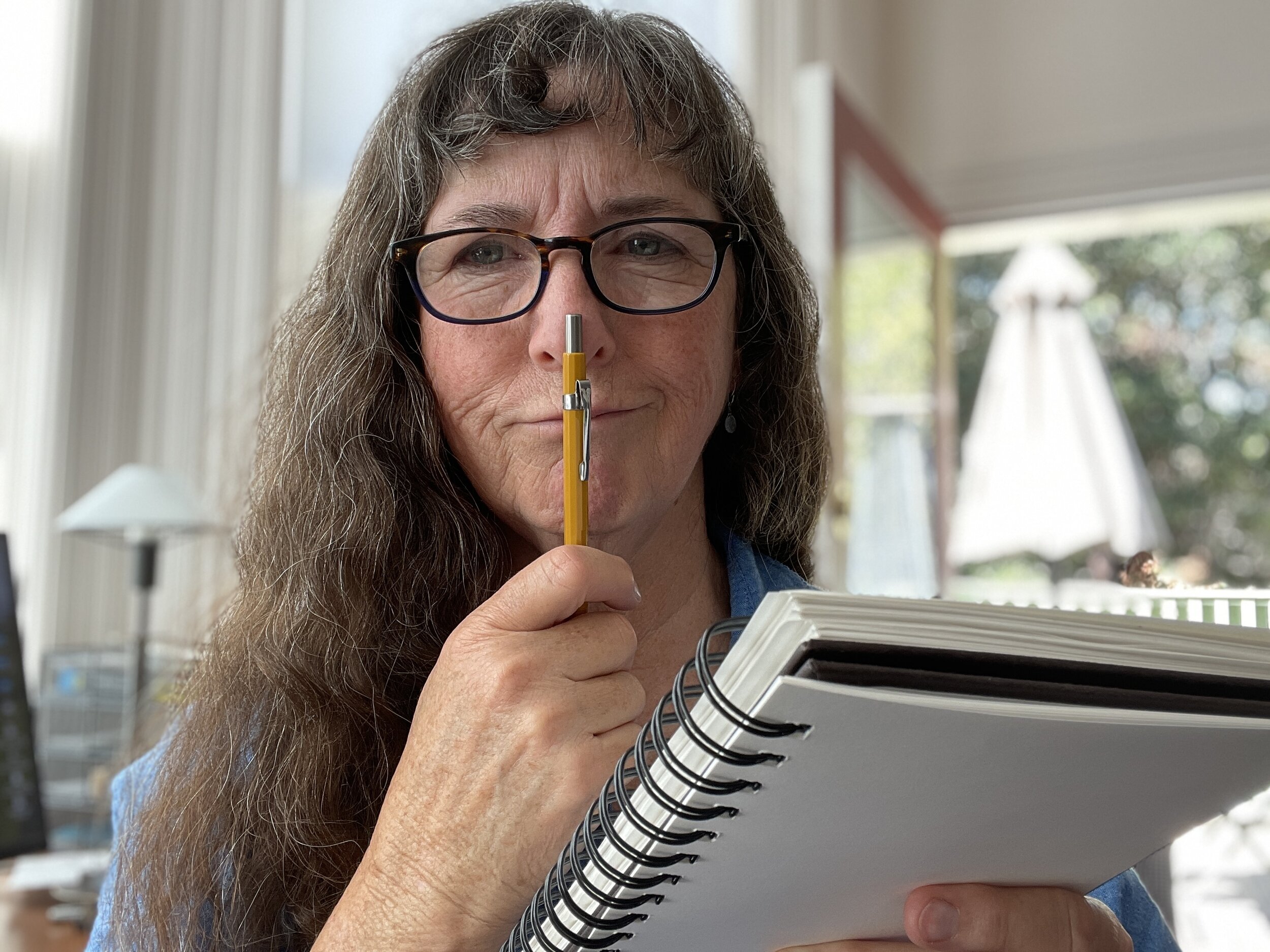NAKED TUNES
I was recently poking around on Facebook and opened a video posted by Jeffrey Spero, his collaboration with fiddler Audrey Knuth featuring two waltzes. The first tune, Waving at You (written by Lindsay Verbil), seems to ask a question, and Jeffrey's second tune provides a response. Together the two waltz tunes are a dreamy and delightful pairing. I liked them so much that I contacted Jeffrey to ask if I could get PDFs of the music to play at home. As we "chatted", I got to wondering what process he followed when writing his tune, Smiling Eyes. Jeffrey says he hasn't written that many tunes, so he had to think about how Smiling Eyes came to life.
I was curious because I usually write songs, which of course have lyrics. I have the most success writing lyrics first, and then to generate a tune to go with, I speak the words to see how the spoken phrases rise and fall. So the lyrics suggest a framework for their own tune. (Sometimes I wonder if I had ANYTHING to do with it at all?) But "naked" tunes are different. What constitutes the framework? Usually I mess around with vocal melody fragments and chords on piano till something gels. Then I record myself "lilting" the tune and fart around with variations. I prefer to stay with it till I find something cohesive that I like; I find if it doesn't come to me in one sitting, I lose the groove and it's hard to come back to later.
I like to use pencil and paper when writing lyrics; putting the pencil in your mouth is a useful strategy; tapping your nose is also helpful
But I've often wondered what works for other folks, so I was happy for the chance to ask Jeffrey about his process. He said that during the pandemic, he'd sit down at his keyboard and just see where his fingers would land. The result was "quite a few disparate lines of melody" that he recorded, and occasionally he'd go back and listen to one. It would spark another line, or he'd play a line he especially liked a few times to "see where it wanted to go". That sounds like it's an evolution, rather than my "hack at it till it's done" approach. He said that the B part in Smiling Eyes "starts with a complete steal" from the opening line of Waving at You, so he definitely used that as an anchor – which also serves to connect the two tunes.
Besides the lovely melody, his chord colors are what I like best, but then he's an experienced keyboard guy who plays in a super-charged contra dance band – The Syncopaths – so that's no surprise. Give it a listen and judge for yourself, although here's a pro-tip from me: watch/listen to the video somewhere conducive to waltzing!



